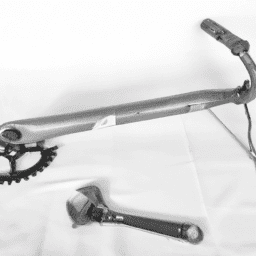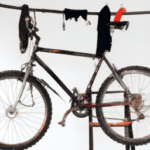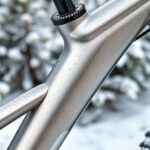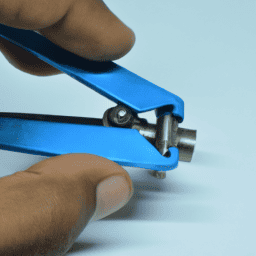As someone who loves cycling, I’m well aware that the winter season can present challenges for bicycles. The chilly weather, alongside snow and ice, can damage your bicycle’s parts, leading to rust and deterioration. Hence, it’s essential to prepare your bike for winter to shield it from the harsh conditions of the season and make sure it’s ready to go when spring arrives.
In this article, I will share my tips and tricks on how to winterize your bike. From protecting your bike from corrosive substances to checking your tires and lubricating your bike’s moving parts, I will cover everything you need to know to keep your bike in tip-top condition during the winter months.
So, grab a pen and paper and let’s get started!
Key Takeaways
- Winterizing your bike is crucial to protect it from winter elements and ensure it’s in top shape for spring.
- Protect bike from corrosive substances by wiping it down after riding in wet or salty conditions and applying protective coatings to metal parts of bike for extra protection against moisture and other corrosive substances.
- Consider switching to wider tires with more aggressive treads for better grip on snowy roads and lubricate bike’s moving parts with wet, dry, or ceramic lubricants depending on weather conditions.
- Find a dry and cool place to store bike during winter months, use a bike cover to protect bike from moisture, and thoroughly inspect bike for potential issues before winterizing.
Protect Your Bike from Corrosive Substances
You’ll want to make sure you protect your bike from any corrosive substances by wiping it down after riding in wet or salty conditions. This is especially important for the metal components on your bike, such as the frame, chain, and gears. Over time, exposure to these substances can cause rust and corrosion, which can weaken your bike and ultimately lead to damage.
To protect your bike, consider applying protective coatings to the metal parts of your bike. These coatings can provide an extra layer of protection against moisture and other corrosive substances.
In addition, be sure to use cleaning solutions that are specifically designed for bikes. These solutions can help remove any dirt, grime, or salt residue that may have accumulated on your bike.
By taking these steps, you can help ensure that your bike stays in top condition throughout the winter season. Now, let’s move on to the next step: checking your tires.
Check Your Tires
Don’t let deflated tires ruin your winter ride; make sure they’re fully inflated and have enough tread. Checking pressure and inspecting treads are essential tire maintenance tips for winterizing your bicycle.
The colder temperature can cause the air inside your tires to contract, leading to underinflation. This can cause damage to your rims and increase the likelihood of flats. To prevent this, use a tire pressure gauge to check your tires’ pressure, and inflate them to the recommended level indicated on the sidewall of your tire.
Additionally, make sure to inspect your tires’ treads for wear, cracks, or other damages that can affect traction on slippery surfaces. If your treads are worn out, it’s time to replace your tires. Proper tire maintenance is crucial to ensure a smooth and safe winter ride.
Along with checking pressure and inspecting treads, you should also consider switching to wider tires with more aggressive treads for better grip on snowy roads. Don’t forget to also carry a spare tube and a pump in case of emergencies.
With all the necessary tire maintenance tips in mind, you’re ready to enjoy a worry-free winter ride.
Next, let’s talk about lubricating your bike’s moving parts to prevent rust and corrosion.
Lubricate Your Bike’s Moving Parts
Interestingly, neglecting to lubricate your bike’s moving parts during the winter months can lead to some pretty gnarly rust and corrosion. To avoid this, it’s essential to properly lubricate your bike’s chain, derailleur, and cables.
Here are some recommended lubricants for winter biking:
-
Wet Lubricants: These types of lubricants are perfect for winter biking because they don’t wash off easily. Wet lubricants are also ideal for wet and snowy conditions because they provide excellent protection against rust and corrosion.
-
Dry Lubricants: If you’re biking in dry conditions, dry lubricants are a better option. They’re less messy than wet lubricants, and they don’t attract as much dirt and grime. However, dry lubricants aren’t as effective in wet or snowy conditions.
-
Ceramic Lubricants: If you want to go the extra mile, ceramic lubricants are an excellent choice. They’re more expensive than other lubricants, but they provide superior protection against wear and tear. Ceramic lubricants are also ideal for extreme weather conditions.
Proper lubrication techniques are also crucial for winter biking. Apply the lubricant to the chain, derailleur, and cables, making sure to wipe off any excess with a clean rag. Be careful not to over-lubricate, as this can attract dirt and grime, causing more harm than good.
Once you’ve properly lubricated your bike’s moving parts, you’re one step closer to winterizing your bike. But before we store our bike properly, there’s one more thing we need to do.
Store Your Bike Properly
When it comes to storing your bike properly during the winter months, there are a few key points to keep in mind.
Firstly, it’s important to find a dry and cool place where your bike won’t be exposed to extreme temperatures or moisture.
Secondly, using a bike cover can help protect your bike from dust and other debris that may accumulate during storage.
Lastly, if possible, consider storing your bike indoors to provide even more protection from the elements.
As an experienced cyclist, I’ve found that following these guidelines can greatly extend the lifespan of my bike and ensure that it’s ready to ride when spring comes around.
Find a Dry and Cool Place
It’s important to find a dry and cool place to store your bike during the winter months. Not only will this protect your bike from moisture and rust, but it will also ensure that your bike stays in good condition for the next riding season. Here are some tips for finding the perfect storage location:
- Look for a spot that is free from moisture and humidity. This could be a heated garage, a dry basement, or a storage unit with climate control.
- Keep your bike away from direct sunlight or sources of heat, as this can cause damage to the tires and other components.
- Consider using a dehumidifier or moisture absorber to keep the air dry and prevent rust from forming.
- If you don’t have access to a dry and cool space, consider investing in a bike storage bag or box to protect your bike from the elements.
By taking the time to find a suitable storage location, you can ensure that your bike will be in great condition when it’s time to ride again.
In the next section, we’ll discuss the importance of using a bike cover to provide even more protection during the winter months.
Use a Bike Cover
Now that you’ve found a dry and cool place to store your bicycle during the winter months, it’s important to also consider using a bike cover. A bike cover is a great investment to protect your bike from the elements and prevent any potential damage.
There are several benefits to using a bike cover. First and foremost, it protects your bike from moisture, dirt, and debris that can accumulate during the winter months. Additionally, it can deter thieves and prevent your bike from being damaged accidentally. There are several types of bike covers available, including waterproof covers, dust covers, and heavy-duty covers that provide extra protection. It’s important to choose the right one for your specific needs and budget.
As you consider using a bike cover, it’s also important to think about indoor storage options for your bike.
Consider Indoor Storage
Opting for indoor storage during the colder months is a great way to ensure your bike remains in top condition. Indoor storage benefits your bike by protecting it from the harsh winter weather conditions, such as snow and freezing temperatures. When storing your bike indoors, make sure to keep it away from any sources of moisture or extreme temperatures.
You can store it in a dry and warm room, such as a garage or basement. If you have a bike stand, use it to keep the bike upright and prevent any damage to the wheels or frame. Additionally, you can cover the bike with a bike cover to keep it dust-free and protected from any scratches.
If you don’t have access to indoor storage, there are alternative storage options available. You can use an outdoor bike shed or a storage unit that is designed specifically for bikes. These options are typically more secure and provide protection from theft. However, they may not provide the same level of protection as indoor storage when it comes to weather conditions.
Whatever option you choose, make sure to prepare your bike for storage by cleaning it thoroughly and lubricating the chains and gears. With proper storage, your bike will be in great condition when it’s time to ride again in the spring.
Prepare for Spring
Now that winter’s over, it’s time to prepare for spring and get back on the bike.
The first step is to inspect your bike thoroughly, checking for any wear and tear or damage that may have occurred over the winter months.
Next, make sure to inflate your tires to the recommended pressure for optimal performance.
It’s also important to test your brakes and gears to ensure they’re functioning properly before hitting the road.
With these steps completed, it’s time to enjoy your first ride of the season!
Inspect Your Bike Thoroughly
Before you start winterizing your bike, make sure you thoroughly inspect it for any potential issues. Performing maintenance is crucial to ensure safe operation and longevity. Identifying wear and tear before winter sets in can save you time and money. Here are four items to check during your inspection:
- Check brakes – make sure brake pads aren’t worn and cables are in good condition. Test brakes to ensure proper stopping.
- Inspect chain – look for rust or stretching. A rusty or stretched chain can cause poor shifting and reduced performance.
- Check tires – inspect tread and ensure proper inflation. Low tire pressure can cause flats and reduced traction on slippery roads.
- Check cables and shifters – make sure they’re functioning properly. Replace any frayed or damaged cables for smooth shifting during winter rides.
After inspecting your bike, inflate your tires. Proper tire inflation is essential for safe and comfortable cycling.
Inflate Your Tires
Make sure you’re keeping your bike tires properly inflated to avoid flat tires and improve traction on slippery roads. During the winter, it’s important to check your tire pressure regularly because colder temperatures can cause the air inside your tires to contract.
Proper inflation techniques include using a floor pump with a pressure gauge, checking the recommended pressure on your tire sidewall, and adjusting the pressure as needed. Overinflated tires can reduce traction, while underinflated tires can increase the risk of pinch flats and make it more difficult to ride in snow or ice.
It’s also helpful to experiment with different tire pressures for winter riding. Lower pressures can provide more grip on slippery surfaces, but may also increase the risk of punctures. Higher pressures can reduce the risk of punctures, but may reduce traction. Finding the right balance for your riding style and conditions can take some trial and error, but it’s well worth the effort.
With properly inflated tires, you can enjoy a smoother, safer ride during the colder months. Now it’s time to test your brakes and gears to ensure they’re working properly.
Test Your Brakes and Gears
As I take my bike out for a spin, I always make sure to give my brakes and gears a thorough test run. It’s important to ensure that they’re in top shape before hitting the road for a smooth and safe ride.
To start, I check my brake adjustment by squeezing both brake levers to make sure they’re engaging evenly and stopping the bike smoothly. If I notice any unevenness, I adjust the brake pads accordingly until they’re even and the bike stops evenly.
Next, I move on to checking my gear alignment. I shift through all of the gears, making sure that the chain moves smoothly and quietly from gear to gear. If I notice any skipping or grinding, I adjust the derailleur until the shifting is smooth and the chain runs quietly.
Once I’m satisfied with both my brake adjustment and gear alignment, I’m ready to hit the road for a fun and safe ride.
Now that my bike is fully winterized, I’m excited to enjoy my first ride of the season! With my brakes and gears in top shape, I can focus on enjoying the ride without worrying about any unexpected mechanical issues.
Enjoy Your First Ride of the Season!
Now that you’re ready to hit the road, take a moment to soak in the fresh air and sunshine as you enjoy your first ride of the season. Cycling is not only a great way to stay active and healthy, but it’s also a fun and eco-friendly mode of transportation. The benefits of cycling for overall health are numerous, including improved cardiovascular fitness, increased muscle strength and flexibility, and reduced stress levels.
To make the most out of your first ride of the season, it’s important to find the perfect route that suits your fitness level and preferences. Whether you prefer a scenic ride through the countryside or a challenging uphill climb, there are plenty of resources available online to help you plan your route.
Make sure to bring plenty of water and snacks, and don’t forget to stretch before and after your ride to prevent injury. With a little preparation and a positive attitude, your first ride of the season is sure to be a memorable one.
Frequently Asked Questions
Can I still ride my bike during the winter after winterizing it?
I love riding my winterized bike with all its new gear. I wear thermal layers, waterproof boots, gloves, and a balaclava. Winterizing my bike has made it more efficient and safe in the colder months.
How often should I clean and lubricate my bike during the winter?
I recommend cleaning and lubricating my bike every 2-3 weeks during the winter. Salt and grime build up quickly and can damage components. Use a degreaser to remove grime and a winter-specific lubricant to protect against moisture and corrosion.
Should I use a specific type of lubricant for my bike during the winter?
Winterizing my bike requires the best lubricants. I prefer using a specific type for winter, like Teflon-based lubricants. Pros include its resistance to water and snow. Cons include its tendency to attract dirt.
How can I prevent my bike from rusting during the winter?
To prevent rust during winter, I recommend using rust-resistant bike accessories such as stainless steel bolts and chains. Regularly cleaning and drying the bike, applying a rust inhibitor, and storing it in a dry place are also best practices.
Is it necessary to cover my bike when storing it during the winter?
Yes, covering your bike during winter storage can provide numerous benefits, including protection from moisture, dust, and debris. Consider using a breathable cover or storing in a dry, protected area. Other winter storage options for bicycles include using a bike rack or stand, and storing in a climate-controlled area.
Conclusion
In conclusion, winterizing your bicycle is an essential step in ensuring its longevity and performance. By protecting your bike from corrosive substances, checking your tires, lubricating your bike’s moving parts, and storing it properly, you can keep your bike in top shape throughout the winter season.
As a seasoned cyclist, I highly recommend taking the time to winterize your bike properly. Remember, prevention is always better than cure. By taking preventative measures, you can avoid costly repairs and replacements down the line.
So, don’t let the winter weather get in the way of your cycling journey. With these tips in mind, you can keep your bike in tip-top condition and prepare for the upcoming spring season.
As the saying goes, "a stitch in time saves nine."So, take the time to winterize your bicycle now, and you’ll thank yourself later. Happy cycling!
















